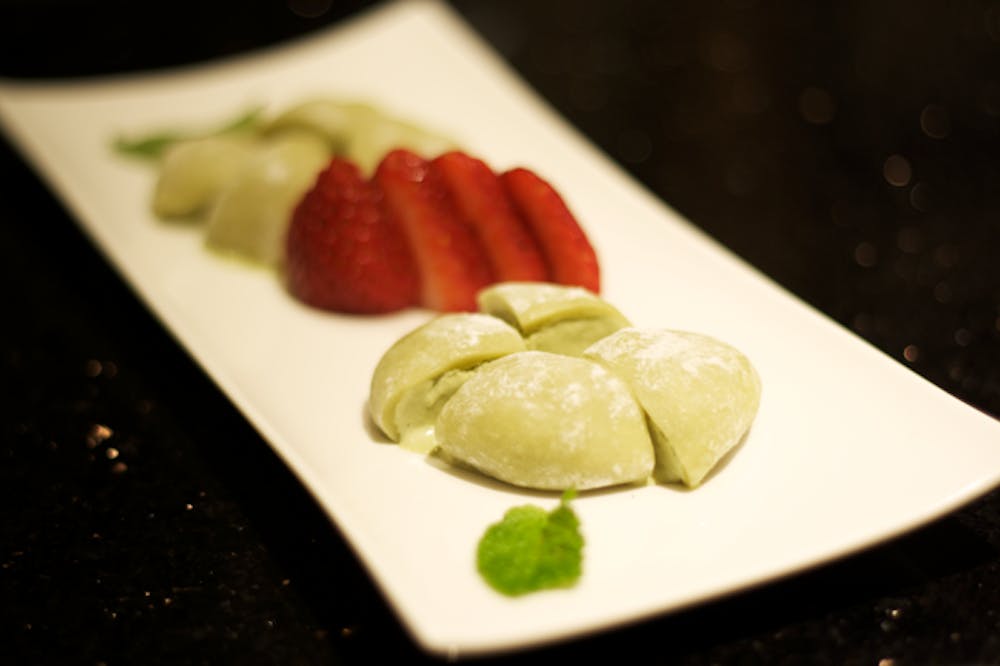Ramen Bar 4040 Locust St. University City (215) 243–9999
Don't Miss: Tonkotsu Ramen Skip: The "ramen" packs Wawa sells for 75 cents. $$
On a Sunday night at 7 p.m., just two weeks after opening, Ramen Bar is packed. Tucked amid bicycle shops and collegiate blocks at 4040 Locust, the hangout has drawn throngs of students, who slurp sesame–sprinkled, soy–flavored noodles and chew tangy strands of pickled ginger. A Matt and Kim song drifts from the speakers.
It looks like owner and chef Dean Leevongcharoen made a judicious choice when he opted to open a ramen joint in West Philadelphia.
The neighborhood has embraced Japan’s national comfort food. The hours at Ramen Bar are convenient. Portions are generous. Prices are moderate. $10 buys a Frisbee–sized ceramic bowl of robust noodles, steeped in a milky elixir that took 20 hours to make. Out of a sizeable cooking staff, only Leevongcharoen and his sous chef know the whole broth recipe.
The service is quick, and the atmosphere informal. Iced oolong tea is plunked down in a can. Ramen is served with a clunky wooden spoon. The interior décor is bareboned, comprised almost entirely of blond wood. Customers may find it challenging to transfer noodles from bowl to mouth, but that splattering sound is learners at work. This is Leevongcharoen’s first restaurant, and some of his clientele haven’t handled ramen before.
Leevongcharoen, a West Philadelphia native of Thai descent, initially encountered ramen when he saw Japanese cartoon characters eating it on television. Years later, while on vacation in Toronto with his wife, he stepped foot in an actual ramen shop. It was September 2011, and restaurant–goers around the world had started slurping their way to soupy satisfaction.
Leevongcharoen is an ex–French cuisinier and the son of a Thai chef. He grew up around his parents’ Thai restaurant. When it came time to earn his own cooking chops, he headed to the Institut Paul Bocuse in Lyon. But this distinctly Japanese food, ramen, caught his attention in a way other foods had not. The winding lines of customers outside the ramen shops impressed him.
“The shops were so busy,” he recalls, “And then I ate it.” The power of ramen grabbed him — he wondered why there wasn’t one in his home city.
Leevongcharoen went on to sample ramen in New York and Los Angeles. The more of it he tasted, the more convinced he became that Philadelphia needed to get on the bandwagon.
As October rolled around and Philadelphia’s foodies clamored for an authentic ramen shop to call their own, Leevongcharoen set off for Thailand, where he would learn the tricks of this particular culinary trade. He found a Japanese guru (which doesn't come cheap) and for one month, soaked in a new training as gamely as pork belly in broth.
In Thailand, Leevongcharoen learned that ramen broth takes five stages to get the correct thickness, that it requires the knees and back legs of a three–month old black pig, that correctly extracting marrow from the bones produces the finest quality broth. Ramen has a multifarious life cycle to which none but the masters are privy. “Those stages,” Leevongcharoen smiles, “Are a secret.”
His ramen isn’t the stuff of quick–cook plastic bowls and dormitory snack stashes. Rather, it’s a spicy homage to a Southern Japanese tradition that's veiled lightly in mystery. Ramen Bar customers won’t learn what makes their meat so tender or what techniques lend their broth rich flavor. But they just might learn how to eat their delicious noodles without making a mess.

